-
Welcome to this forum . We are a worldwide group with a common interest in Birmingham and its history. While here, please follow a few simple rules. We ask that you respect other members, thank those who have helped you and please keep your contributions on-topic with the thread.
We do hope you enjoy your visit. BHF Admin Team
You are using an out of date browser. It may not display this or other websites correctly.
You should upgrade or use an alternative browser.
You should upgrade or use an alternative browser.
Then & Now
- Thread starter Phil
- Start date
what a great shot OM of farm st school my old school..opposite that st saviours church where our mom was baptised...farm st infants and juniors mixed was all one school that had 2 entrances..the main one was in villa st and a gate entrance on the farm st side..om the building you mentioned on the far corner has been there for over 100 years and was the peoples dispensary..in the 60s part of it was used as a dentists which i used to go to and is still a dentists today...the shop next to the dispensary with the awning down was miss bunches shop..mom always got our shoes from there...I know the feeling Gerry. I used to live in Villa Street, next door to the cafe on the corner of Villa Street & Nursery Road. The area was so much better then, compared to now. If my memory serves me well, wasn't the church St Michael's.
hi michael i did know that you lived in villa st i cant recall you mentioning that..what years were you living there and what number...
lyn
michaelwicks54
Aston bred & proud.
Thank you for that info oldMohawk.On an old map dated 1914 the school is named as 'St Saviour Church'. The school appears to be in two sides possibly boys and girls.
jmadone
master brummie
In my opinion, how much nicer the area looked when the church was there. I used to be on the back of an old Ariel motorbike, tearing my way through Hockley at 35 mph, on my way to Sea Cadets, "T/S: VERNON" at the resevoir., that was in 1952.
I seem to recall on my journey to school on the No 11 bus that we passed a Sea Cadet establishment in Acocks Green just down from the Railway station. I thought that was T.S. Vernon or is my memory playing tricks?
Gerry Cannell
master brummie
T/S VERNON was on Edgbaston Resevoir mate. I was there for two years. Then funnily enough...I joined the Guards!
I was a cadet on TS Leopard in Great Barr. Apparently, TS Vernon were our rivals (so I was told), they were good at all of the marching guard’s and sailing stuff. I did spend a weekend training course with some of the cadets from TS Dolphin, they had a super commando team.
My naval career was quickly sunk once I realised that my expectation of becoming an officer after the first week and admiral by the second in the navy were a little over ambitious.
My naval career was quickly sunk once I realised that my expectation of becoming an officer after the first week and admiral by the second in the navy were a little over ambitious.
oldMohawk
gone but not forgotten
After a modernisation of the Bull Ring area, St Martin's Church looks comfortable in the view.
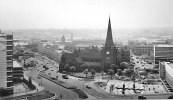
After the latest modernisation the church does not sit so comfortably.
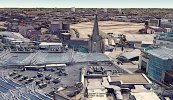
But possibly from another view it is not so bad ... perhaps looks better from street level ... although more grass and trees would please an 'oldie' like me ...
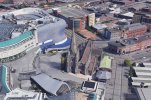

After the latest modernisation the church does not sit so comfortably.

But possibly from another view it is not so bad ... perhaps looks better from street level ... although more grass and trees would please an 'oldie' like me ...

Last edited:
michaelwicks54
Aston bred & proud.
Totally agree. Prince Charles once called the old Bullring a concrete jungle. Now it definitely is with glass panels thrown in for good measure. I very much prefer the old Bullring in the top picture, with a few trees & greenery. This so-called modernization of our once beautiful city is taking away the character & replacing it with concrete & glass structures just to make more money for the fat cats.After a modernisation of the Bull Ring area, St Martin's Church look comfortable in the view.
View attachment 157325
After the latest modernisation the church does not sit so comfortably.
View attachment 157326
But possibly from another view it is not so bad ... perhaps looks better from street level ... although more grass and trees would please an 'oldie' like me ...
View attachment 157327
oldMohawk
gone but not forgotten
In 1934 the area around St Josephs Church on Long Acre was full of houses and small factories. Walter Street curving in from top left, Railway Terrace and High Park Street in the view.
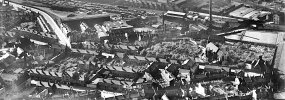
image source 'https://www.britainfromabove.org.uk/'
Now - all the houses have been replaced by warehouses and other large buildings. St Josephs Church is still there. Most streets are in original positions ... what of High Park Street ?
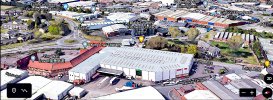
The people living in 1934 would have been astounded if they could have looked in their future and seen how High Park Street looks now ... click and see !


image source 'https://www.britainfromabove.org.uk/'
Now - all the houses have been replaced by warehouses and other large buildings. St Josephs Church is still there. Most streets are in original positions ... what of High Park Street ?

The people living in 1934 would have been astounded if they could have looked in their future and seen how High Park Street looks now ... click and see !
Last edited:
paul stacey
master brummie
Never fails to astound me mate. I wonder how looking at a late 18 C map, of countryside and woods, turns in to massive factories and motor ways. Paul
Richard Dye
master brummie
oldMohawk, you comment about people in 1934 is very appropriate. However I just looked at your Google Maps link of Thimble Mill Lane, that I used to travel frequently 60 plus years ago, to say surprised is a gross understatement. I fully understand the need for change but at any cost!In 1934 the area around St Josephs Church on Long Acre was full of houses and small factories. Walter Street curving in from top left, Railway Terrace and High Park Street in the view.
View attachment 161625
Now - all the houses have been replaced by warehouses and other large buildings. St Josephs Church is still there. Most streets are in original positions ... what of High Park Street ?
View attachment 161626
The people living in 1934 would have been astounded if they could have looked in their future and seen how High Park Street looks now ... click and see !

Thank you for sharing a piece of history! (I think)
Richard Dye
master brummie
Very scary I am sure!Never fails to astound me mate. I wonder how looking at a late 18 C map, of countryside and woods, turns in to massive factories and motor ways. Paul
Richard Dye
master brummie
Absolutely, I think it’s not so much about the what it’s the how!But if you would've given those same people the choice between a cold, damp and crowded house with no heating and an outside toilet, and even a small modern house I'm sure which one they would've chosen.
It's also the where. When I look at the photos of areas of redevelopment what has happened in the city is a redistribution of land use from families to business alongside accommodation of the car with massive road development. This also meant that large tracts of land are simply used for car parking for a lot of single floored warehouses/industrial units.Absolutely, I think it’s not so much about the what it’s the how!
Last edited:
oldMohawk
gone but not forgotten
In 1934 a small aeroplane flew over Small Heath with the observer leaning out of the open cockpit to photograph the Whitworth Motor Accessories factory with nearby roads also in the view.
Red dot - Lime Grove
Green dot - Tilton Road
Blue dot - Venetia Road
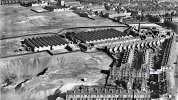
image source 'https://www.britainfromabove.org.uk/'
In 2020 a Google Earth view shows that 13 bays of the Whitworth factory building still exist as does the school building (minus it's spire) seen in the 1934 view near the corner of Tilton Road and Garrison Lane. The white building next to the school is now used as a mosque. Lime Grove has been replaced by a car park but Venetia Road is still there minus houses. I suppose the folk of 1934 would have been surprised to be told that sometime in the future an 'HMS Forward' would appear in the area.
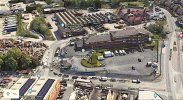
Click and scroll to see HMS Forward ....

Red dot - Lime Grove
Green dot - Tilton Road
Blue dot - Venetia Road

image source 'https://www.britainfromabove.org.uk/'
In 2020 a Google Earth view shows that 13 bays of the Whitworth factory building still exist as does the school building (minus it's spire) seen in the 1934 view near the corner of Tilton Road and Garrison Lane. The white building next to the school is now used as a mosque. Lime Grove has been replaced by a car park but Venetia Road is still there minus houses. I suppose the folk of 1934 would have been surprised to be told that sometime in the future an 'HMS Forward' would appear in the area.

Click and scroll to see HMS Forward ....
Last edited:
MWS
from Bham
It's also the where. When I look at the photos of areas of redevelopment what has happened in the city is a redistribution of land use from families to business alongside accommodation of the car with massive road development. This also meant that large tracts of land are simply used for car parking for a lot of single floored warehouses/industrial units.
It always surprises me how many people used to live in the Bham area in a much smaller developed area.
On the 1901 census there are 800,000 people living in the parishes of Bham, Aston, Aston Manor, Erdington, Kings Norton, Balsall Heath, Edgbaston, Harborne, Northfield, Handsworth, Perry Barr and Yardley.
Which isn't far off the modern population and there were still large areas that were still farmland,
Richard Dye
master brummie
I agree Tinpot, in the US the land ownership system is different. What you describe is called eminent domain where the government, state or federal take the land as you described. This for the last 50 years or so has been fought by the populous tooth and nail, mostly winning. What is such a shame is there are alternatives it’s just that the government just want to take the easy path!It's also the where. When I look at the photos of areas of redevelopment what has happened in the city is a redistribution of land use from families to business alongside accommodation of the car with massive road development. This also meant that large tracts of land are simply used for car parking for a lot of single floored warehouses/industrial units.
What I see and read on the Forum is SO much wonderful history, knowledge and beautiful architecture, here in the US because the country is so new (by comparison) it is devastating to see so much destroyed.
I spent so much of my early years on the platforms at Snow Hill, I learned about Brunel, went to the William Murdoch school was in Boulton house etc. I study the Industrial Revolution intensely. Snow Hill and GWR was not just another station, it was WORLD history!
Richard Dye
master brummie
MWS, that’s an astonishing number and given natural organic growth in population is 3% over time where did they all go?It always surprises me how many people used to live in the Bham area in a much smaller developed area.
On the 1901 census there are 800,000 people living in the parishes of Bham, Aston, Aston Manor, Erdington, Kings Norton, Balsall Heath, Edgbaston, Harborne, Northfield, Handsworth, Perry Barr and Yardley.
Which isn't far off the modern population and there were still large areas that were still farmland,
If you had the number for motor vehicle population in 1901 and now it would be staggering!
When I first looked at the photo HMS Forward I thought it was some kind of residential building but it looks more like a 'ghost ship'.In 1934 a small aeroplane flew over Small Heath with the observer leaning out of the open cockpit to photograph the Whitworth Motor Accessories factory with nearby roads also in the view.
Red dot - Lime Grove
Green dot - Tilton Road
Blue dot - Venetia Road
View attachment 161635
In 2020 a Google Earth view shows that 13 bays of the Whitworth factory building still exist as does the school building (minus it's spire) seen in the 1934 view near the corner of Tilton Road and Garrison Lane. The white building next to the school is now used as a mosque. Lime Grove has been replaced by a car park but Venetia Road is still there minus houses. I suppose the folk of 1934 would have been surprised to be told that sometime in the future an 'HMS Forward' would appear in the area.
View attachment 161636
Click and scroll to see HMS Forward ....

MWS
from Bham
MWS, that’s an astonishing number and given natural organic growth in population is 3% over time where did they all go?
If you had the number for motor vehicle population in 1901 and now it would be staggering!
I suppose some of them (or their children) would have moved to places like Solihull, Sutton Coldfield, Tamworth and Redditch.
Hardly scientific but in 1901 the population of Solihull was just 15000, Sutton Coldfield was 14000, Redditch was 9000 and Tamworth was 7000.
Now it is 200000, 95000, 85000 and 77000 respectively.
Richard Dye
master brummie
MWS, as a dear friend would say, it is what it is! Those are major population shifts….I suppose some of them (or their children) would have moved to places like Solihull, Sutton Coldfield, Tamworth and Redditch.
Hardly scientific but in 1901 the population of Solihull was just 15000, Sutton Coldfield was 14000, Redditch was 9000 and Tamworth was 7000.
Now it is 200000, 95000, 85000 and 77000 respectively.
Eric Gibson
master brummie
The council demolished most of those places in the sixties/seventies. 
richardinwales
master brummie
Some nice arial photos of old brum here
 www.britainfromabove.org.uk
www.britainfromabove.org.uk
Its a great site for looking around the UK in the 1920s
Search > Grid | Britain From Above
Its a great site for looking around the UK in the 1920s
oldMohawk
gone but not forgotten
This 1933 aerial view shows Summer Hill Ice Rink built c1930. Years later in the 1950s I had happy teenage years in the rink five nights a week and often on Sunday mornings. I did have a two year break for national service in the RAF.
Five buildings shaded pink are still there today with Spring Hill Library on the right standing on the corner of Spring Hill and Icknield Street. A building in the centre stands immediately opposite the rink. The upper part of a large house behind shows in the middle of other buildings and it is know as Heaton House. I do remember the Summerhill Tavern on left, because with no alcohol allowed in the ice rink, we used to go across the road (with our skates on) to have a quick half pint. Lots of housing across the view.
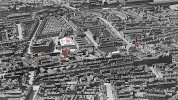
image source 'www.britainfromabove.org.uk/'
The modern view below shows the ice rink site cleared for a building project. The rink had previously been replaced by a car showroom which had been demolished. The large house which stood in the middle of other buildings now stands fully visible in a cleared area ... it is known as Heaton House. The new buildings in the foreground look interesting.
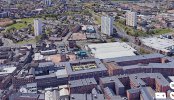
The ice rink as I remember it. It did become a roller rink when ice skating moved to Silver Blades.
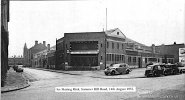
The car showroom which replaced it.
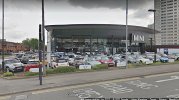
The site cleared ready for luxury apartments to be built.
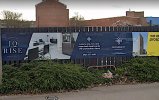
Click the link below to look around Summer Hill.

edited to mention 'Heaton House'
Five buildings shaded pink are still there today with Spring Hill Library on the right standing on the corner of Spring Hill and Icknield Street. A building in the centre stands immediately opposite the rink. The upper part of a large house behind shows in the middle of other buildings and it is know as Heaton House. I do remember the Summerhill Tavern on left, because with no alcohol allowed in the ice rink, we used to go across the road (with our skates on) to have a quick half pint. Lots of housing across the view.

image source 'www.britainfromabove.org.uk/'
The modern view below shows the ice rink site cleared for a building project. The rink had previously been replaced by a car showroom which had been demolished. The large house which stood in the middle of other buildings now stands fully visible in a cleared area ... it is known as Heaton House. The new buildings in the foreground look interesting.

The ice rink as I remember it. It did become a roller rink when ice skating moved to Silver Blades.

The car showroom which replaced it.

The site cleared ready for luxury apartments to be built.

Click the link below to look around Summer Hill.
edited to mention 'Heaton House'
Last edited:
PaulaArtist
proper brummie kid
What a great loss all that history gone. I understand that wealthy shops were along this street. Does it show the pub in the photo?A view along Bull Street towards Snow Hill, date probably earlier than 1910.
View attachment 133512
More than 100 years later a very modern looking Bull Street ...
View attachment 133513
PaulaArtist
proper brummie kid
Thanks for sharing this lovely photo I done in the past a painting showing the trams along there.A view along Bull Street towards Snow Hill, date probably earlier than 1910.
View attachment 133512
More than 100 years later a very modern looking Bull Street ...
View attachment 133513


